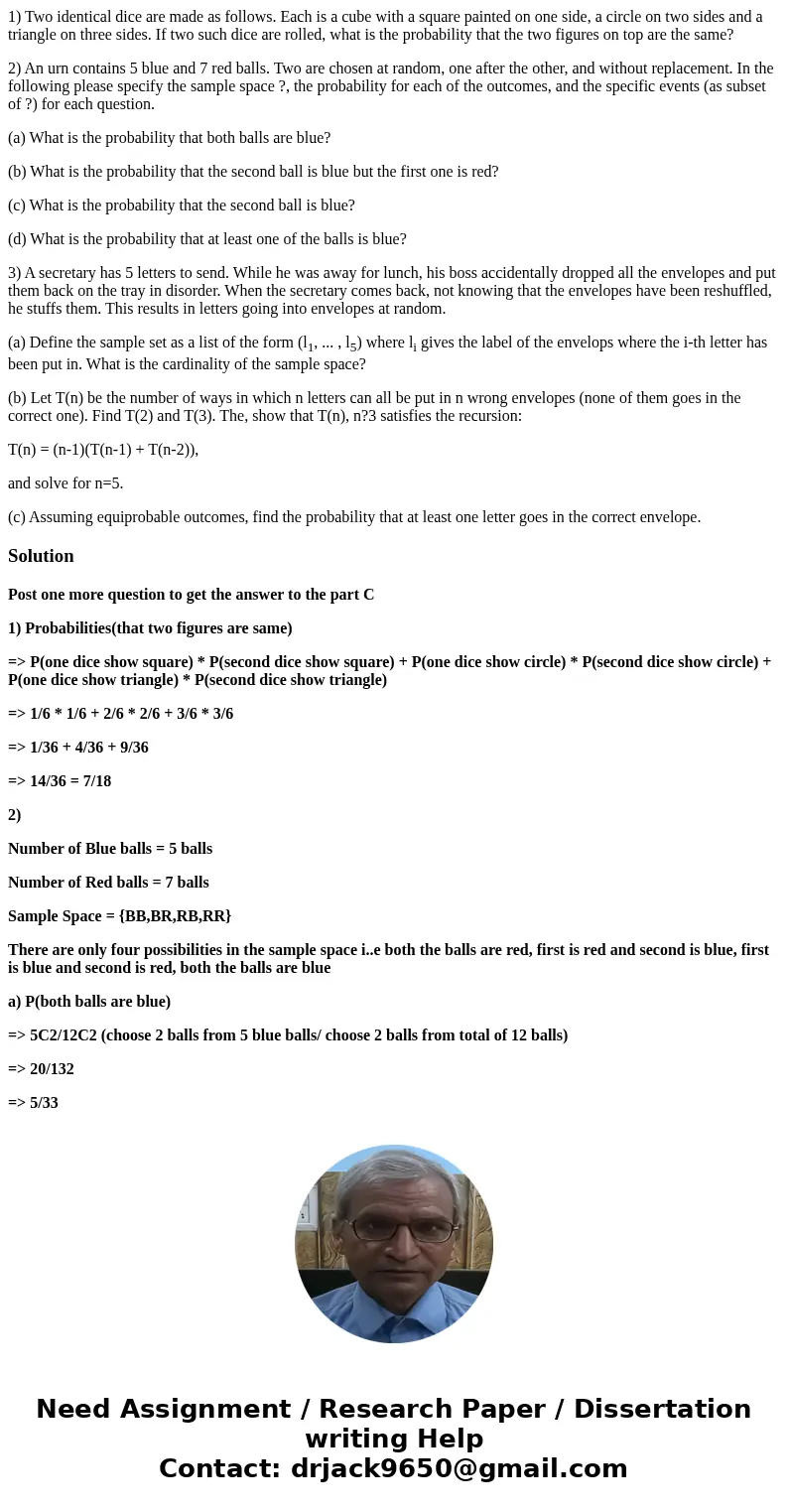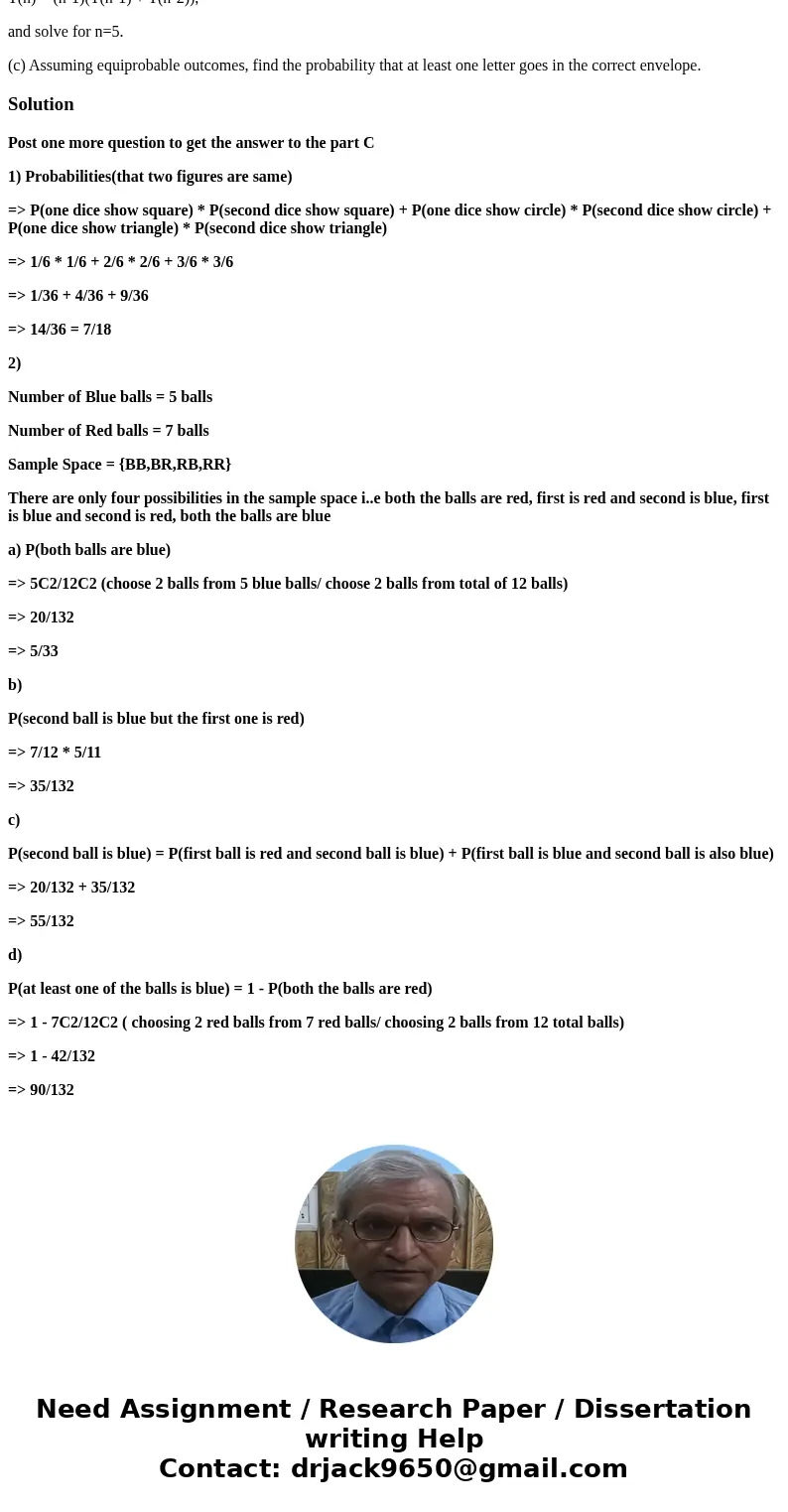1 Two identical dice are made as follows Each is a cube with
1) Two identical dice are made as follows. Each is a cube with a square painted on one side, a circle on two sides and a triangle on three sides. If two such dice are rolled, what is the probability that the two figures on top are the same?
2) An urn contains 5 blue and 7 red balls. Two are chosen at random, one after the other, and without replacement. In the following please specify the sample space ?, the probability for each of the outcomes, and the specific events (as subset of ?) for each question.
(a) What is the probability that both balls are blue?
(b) What is the probability that the second ball is blue but the first one is red?
(c) What is the probability that the second ball is blue?
(d) What is the probability that at least one of the balls is blue?
3) A secretary has 5 letters to send. While he was away for lunch, his boss accidentally dropped all the envelopes and put them back on the tray in disorder. When the secretary comes back, not knowing that the envelopes have been reshuffled, he stuffs them. This results in letters going into envelopes at random.
(a) Define the sample set as a list of the form (l1, ... , l5) where li gives the label of the envelops where the i-th letter has been put in. What is the cardinality of the sample space?
(b) Let T(n) be the number of ways in which n letters can all be put in n wrong envelopes (none of them goes in the correct one). Find T(2) and T(3). The, show that T(n), n?3 satisfies the recursion:
T(n) = (n-1)(T(n-1) + T(n-2)),
and solve for n=5.
(c) Assuming equiprobable outcomes, find the probability that at least one letter goes in the correct envelope.
Solution
Post one more question to get the answer to the part C
1) Probabilities(that two figures are same)
=> P(one dice show square) * P(second dice show square) + P(one dice show circle) * P(second dice show circle) + P(one dice show triangle) * P(second dice show triangle)
=> 1/6 * 1/6 + 2/6 * 2/6 + 3/6 * 3/6
=> 1/36 + 4/36 + 9/36
=> 14/36 = 7/18
2)
Number of Blue balls = 5 balls
Number of Red balls = 7 balls
Sample Space = {BB,BR,RB,RR}
There are only four possibilities in the sample space i..e both the balls are red, first is red and second is blue, first is blue and second is red, both the balls are blue
a) P(both balls are blue)
=> 5C2/12C2 (choose 2 balls from 5 blue balls/ choose 2 balls from total of 12 balls)
=> 20/132
=> 5/33
b)
P(second ball is blue but the first one is red)
=> 7/12 * 5/11
=> 35/132
c)
P(second ball is blue) = P(first ball is red and second ball is blue) + P(first ball is blue and second ball is also blue)
=> 20/132 + 35/132
=> 55/132
d)
P(at least one of the balls is blue) = 1 - P(both the balls are red)
=> 1 - 7C2/12C2 ( choosing 2 red balls from 7 red balls/ choosing 2 balls from 12 total balls)
=> 1 - 42/132
=> 90/132


 Homework Sourse
Homework Sourse